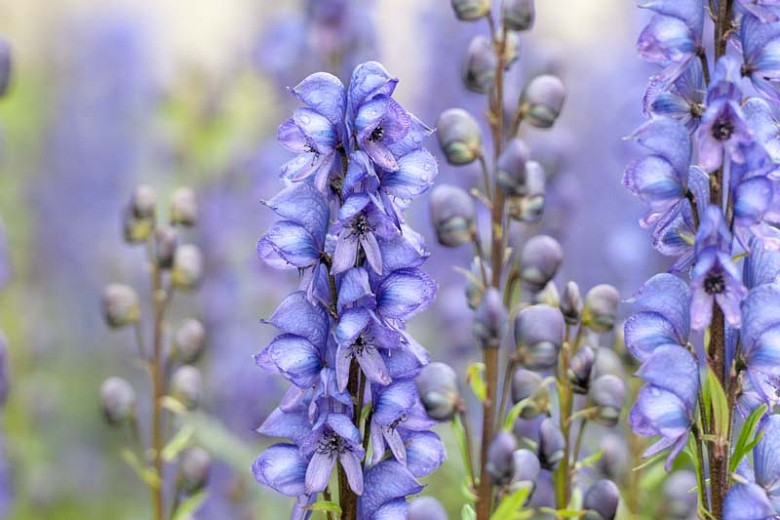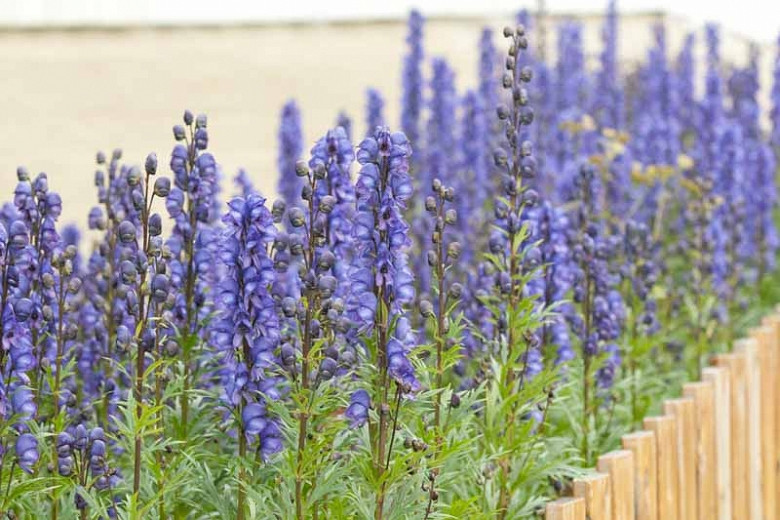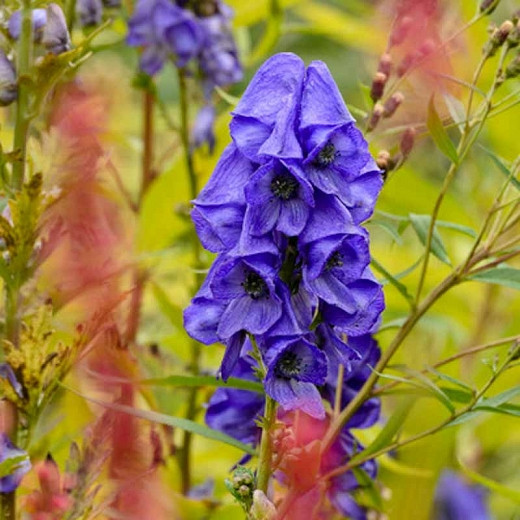Aconitum napellus (Monkshood)
Native to Western and Central Europe, Aconitum napellus brings showy, densely packed spikes of deep purplish-blue flowers and attractive foliage in the shade garden.
Native to Western and Central Europe, Aconitum napellus brings showy, densely packed spikes of deep purplish-blue flowers and attractive foliage in the shade garden.
- Blooming for weeks from mid to late summer, the helmet shape of the flowers makes them resemble the hood worn by medieval monks, hence the common names of monkshood or helmet flower.
- Growing up to 4 feet high (120 cm) and 18 inches wide (45 cm), this upright flowering perennial performs best in full sun or part shade and in constantly moist, rich and well-drained soils.
- Used as an arrow poison in ancient times, it is important to note that all parts of this plant are poisonous. You should wear gloves when working with it and avoid planting in areas where small children might come in contact with it.
- Deer and rabbit resistant
- Cut back plants after flowering to promote re-bloom later in the season.
- All parts are highly toxic if eaten, all parts may be harmful through skin contact. Wear gloves and other protective equipment when handling. Avoid planting in areas where small children might come in contact with it.
- Toxic to dogs, toxic to cats, toxic to horses, toxic to humans.
Requirements
| Hardiness | 3 – 8 |
|---|---|
| Heat Zones | 3 – 8 |
| Climate Zones | 1, 2, 3, 4, 5, 6, 7, 8, 9, 14, 15, 16, 17, 18, 19, 20, 21, A1, A2, A3 |
| Plant Type | Perennials |
| Plant Family | Aconitum – Monkshoods |
| Exposure | Full Sun, Partial Sun |
| Season of Interest | Summer (Mid,Late) |
| Height | 2' – 4' (60cm – 120cm) |
| Spread | 1' – 2' (30cm – 60cm) |
| Spacing | 18″ (45cm) |
| Water Needs | Average |
| Maintenance | Average |
| Soil Type | Chalk, Clay, Loam, Sand |
| Soil pH | Acid, Alkaline, Neutral |
| Soil Drainage | Moist but Well-Drained |
| Characteristics | Cut Flowers, Showy |
| Tolerance | Deer, Rabbit |
| Garden Uses | Beds and Borders |
| Garden Styles | Informal and Cottage, Traditional Garden |


